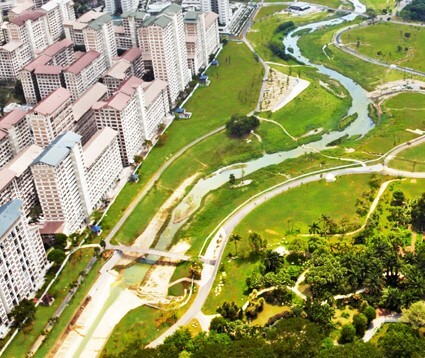
There is a climate phenomenon YCSPL is all aware of which is known as Urban Heat Island (UHI). UHI means that cities are hotter than their neighboring areas. A lot of research has been carried out and the latest studies suggest that the way our cities are planned serves as a pivotal factor in escalating climate change. The simple answer to this complex crisis is the inclusion of climate change as a fundamental factor in the creation of blueprints by the city planners in order to build better cities and hence, a better future.

Cities are not just the largest origin of emissions globally but also extremely exposed to the wrath of its repercussions. According to scientific studies, most cities throughout the world are already facing the effects and consequences of climate change. Despite being at risk of more collateral damage, cities also have the power and potential for creating the requisite change. Changes in land use, zoning, transport, green space, and other policies including energy policy can help you create meaningful change and a significant shift in the narrative.
Most cities in the world do not have an adaptation plan for the menace of climate change. It certainly is a long road towards full-scale adaptation. Many reports state the estimated cost of climate adaptation is colossal enough to create significant damage and snowball effect on the economy, ecosystem, and infrastructure.
Full-sized adaptation will call for admiration of the existing complicated and interrelated urban systems while acknowledging the hurdles that come in the way. Understanding urban planning for climate adaptation for urban areas and cities will face challenges such as the dearth of financial aid, learning, and implementing sustainable solutions for climate adaptation. The convolution in the implementation phase of adaptation needs to be handled fittingly. The planners that are continuously working on managing the perils emerging due to climate change are not the only ones responsible, it’s the practitioners as well. The adaptive measures that are designed by the city planners shall positively impact urban mobility and economic prosperity in order for the entire process to be sustainable. Coherent and cohesive action is vital in ensuring the long-term success of the climate adaptive transformation.
After closely studying and carefully scrutinizing the success stories from around the globe, some climate adaptation best practices have been discovered to facilitate urban transformation.
Optimizing the rate of success for the proposed implementation of green and blue solutions, the administrative approach that will lead these efforts is critical. These sustainable solutions are indispensable as they contribute to urban strength. Augmenting policy instruments is key to accelerating climate adaptation. Policy instruments including green space index, subsidies, taxes, etc. are demonstrated to be highly effective and efficient in various cities of Europe contributing to inflation in blue-green standards.
Standards and regulations are requisite for climate adaptation in the public and private domains. These standards shall not only be mandatory to follow by the new developments but they must keep a check on pre-existing ones as well. Urban regeneration is what drives contemporary change in the urban sector.
Climate change is a complex problem that affects the world at large. So, city planners need to be flexible in their approach to tackling it. To manage all its complexities, YCSPL requires plans for the future, and policymakers must act as an ally providing guidelines, frameworks, and adaptive interventions.
Change becomes the most dynamic, powerful source of progress you have

